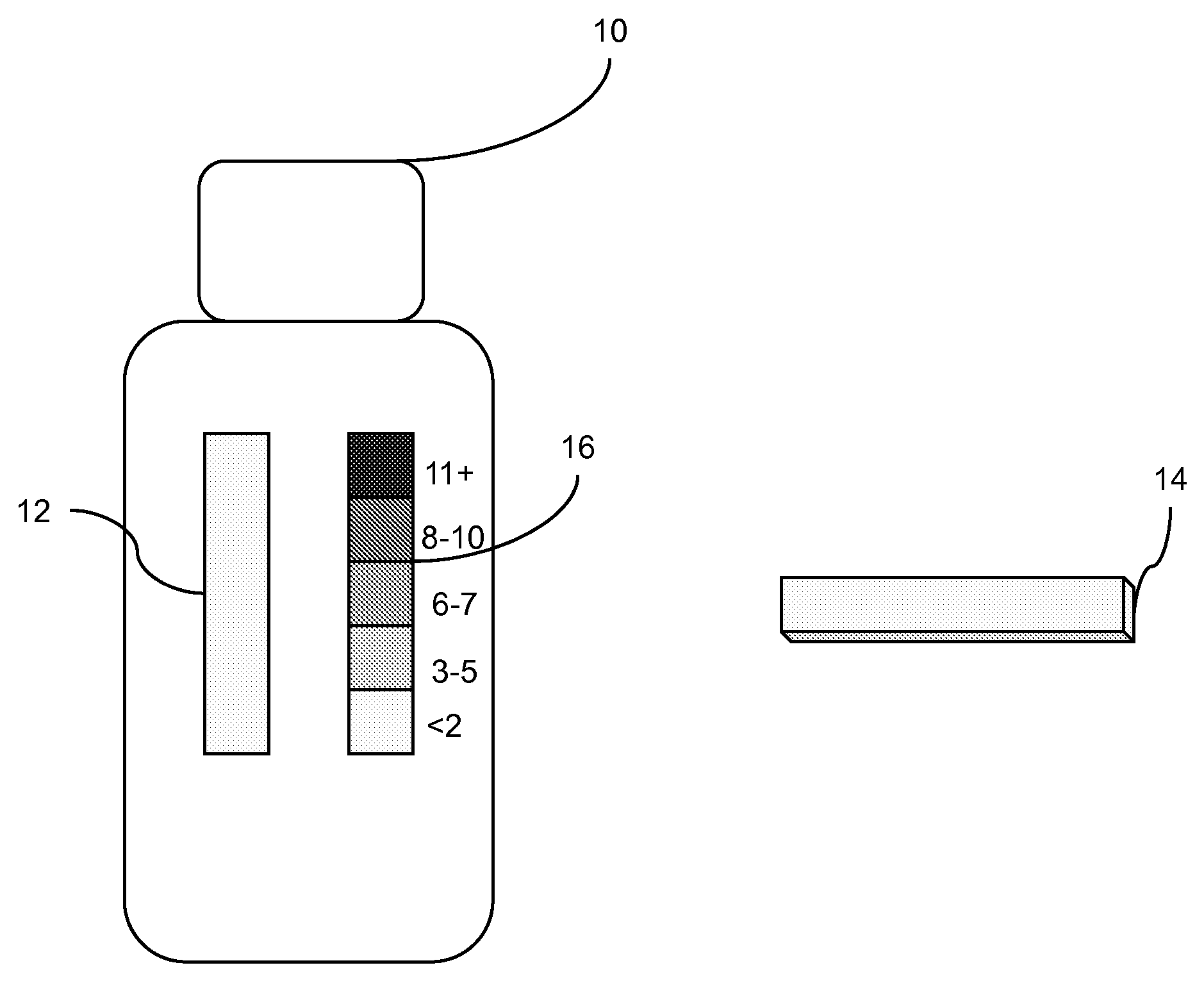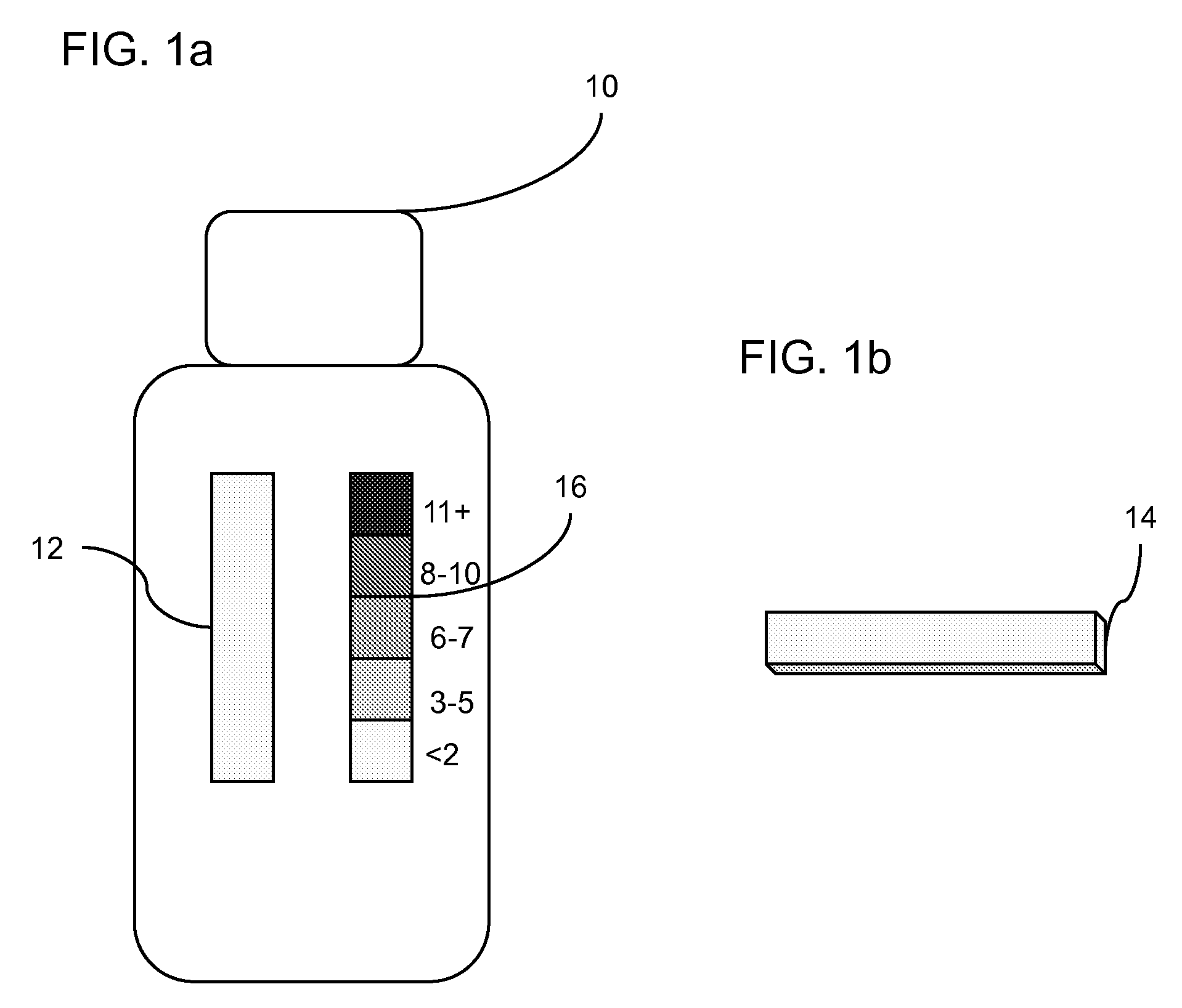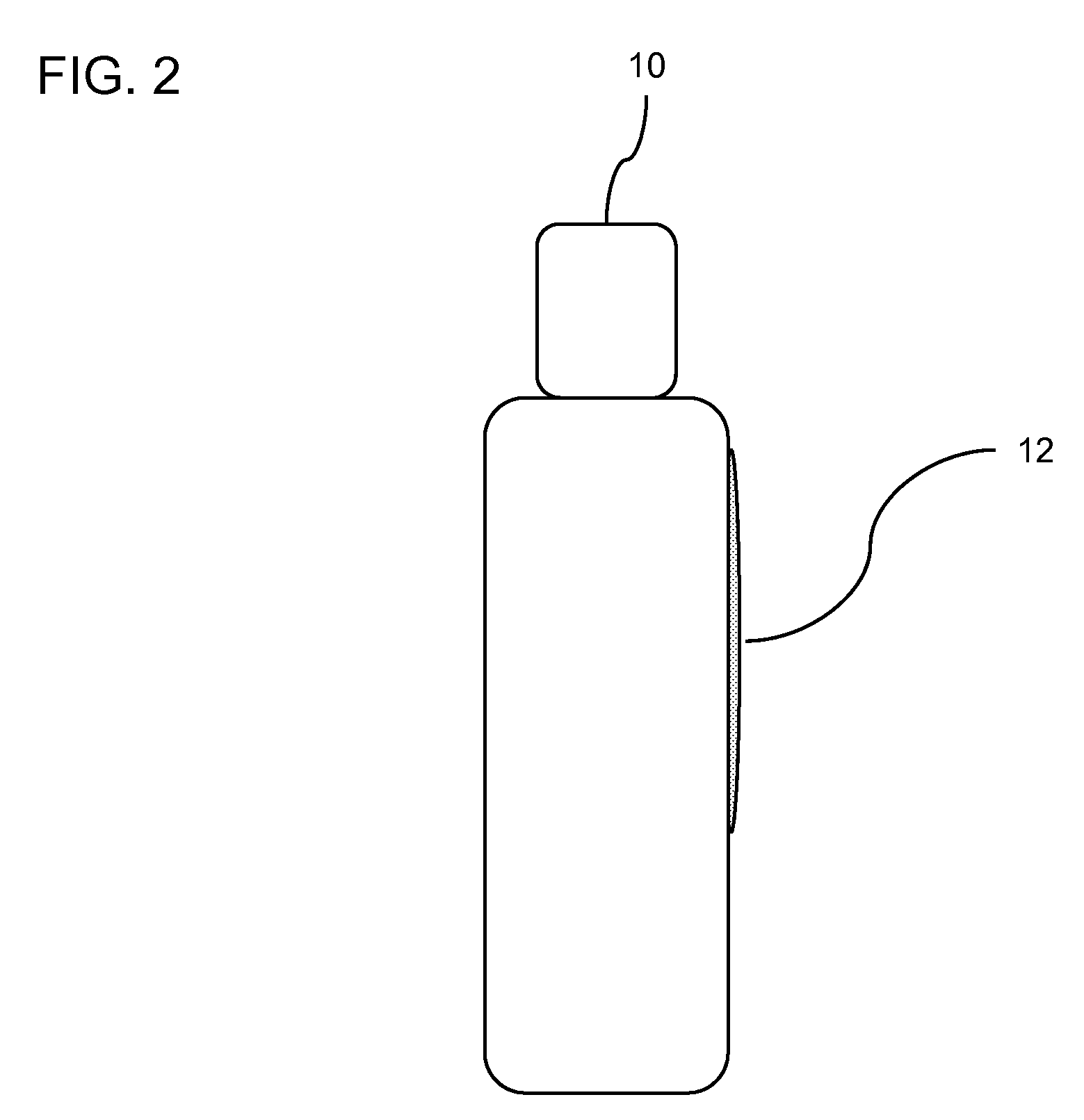Bottle with environmental sensor
a technology of environmental sensor and consumer product, which is applied in the field of sunscreen bottles, can solve the problems of cancer formation, shortened uv radiation exposure time, and common damage to skin by ultraviolet radiation,
- Summary
- Abstract
- Description
- Claims
- Application Information
AI Technical Summary
Benefits of technology
Problems solved by technology
Method used
Image
Examples
Embodiment Construction
[0027]The present invention relates generally to environmental exposure sensors, such as, for example, UV exposure indicator sensors and their use with consumer items. Specifically, this invention pertains to the novel application of an environmental sensor, such as a UV or heat sensor to the surface of a bottle or container to be used as a means of providing its user with information about the ambient environment (e.g., UV or heat radiation) incident on said bottle or container and therefore the UV radiation to which the user is being exposed.
[0028]For example, in one embodiment shown schematically in FIGS. 1 and 2, the invention is directed to a consumer item, such as a bottle (10) that includes on its surface by attachment, embedding or other means, an environmental exposure sensor, such as a UV or heat exposure indicator sensor (12). One exemplary environmental exposure indicator sensor would be a heat or UV exposure indicator sensing strip (14) as shown in FIG. 14. The manner o...
PUM
| Property | Measurement | Unit |
|---|---|---|
| wavelengths | aaaaa | aaaaa |
| wavelengths | aaaaa | aaaaa |
| wavelengths | aaaaa | aaaaa |
Abstract
Description
Claims
Application Information
 Login to View More
Login to View More - R&D
- Intellectual Property
- Life Sciences
- Materials
- Tech Scout
- Unparalleled Data Quality
- Higher Quality Content
- 60% Fewer Hallucinations
Browse by: Latest US Patents, China's latest patents, Technical Efficacy Thesaurus, Application Domain, Technology Topic, Popular Technical Reports.
© 2025 PatSnap. All rights reserved.Legal|Privacy policy|Modern Slavery Act Transparency Statement|Sitemap|About US| Contact US: help@patsnap.com



